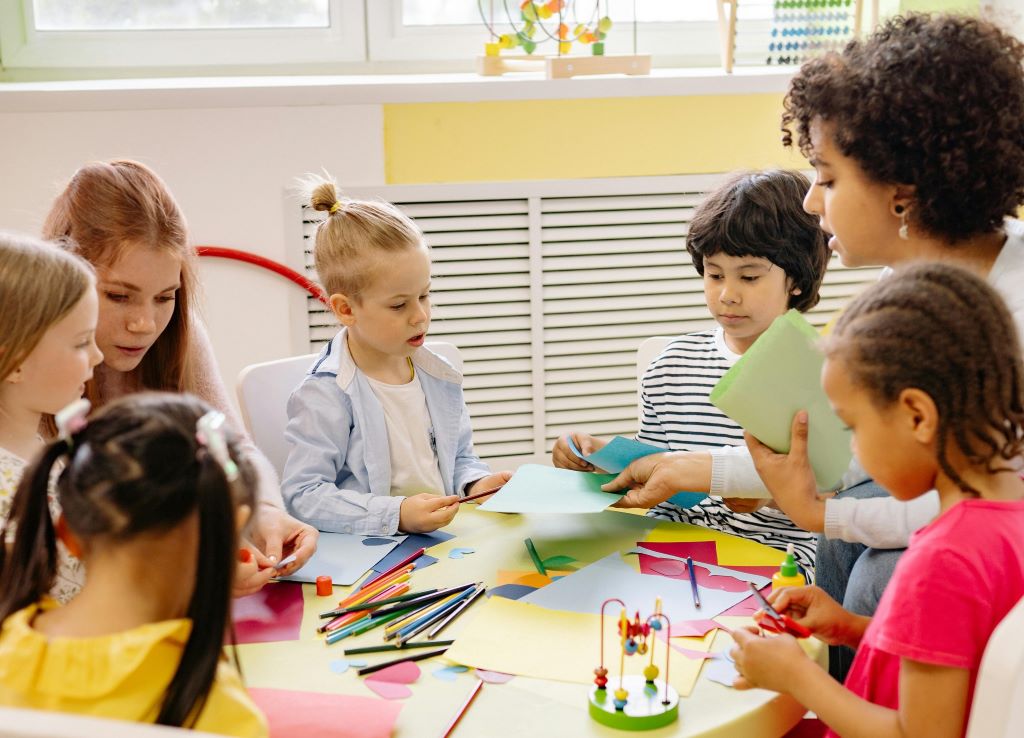In Part 2 of the series on authentic student engagement we describe four protocols from the recent ASCD book Teaching for Authentic Engagement by Lauren Porosoff. In Part 1 we explored authentic engagement and responsive formative feedback.
Group projects are a powerful tool in the classroom, helping students develop essential skills like communication, collaboration, and problem-solving. However, without clear protocols, group work can sometimes become chaotic, leading to uneven participation and frustration. To foster a positive and productive group work environment, educators can implement structured protocols that guide students through every stage of their project.
Protocol #1: Topic Appraisal: Setting the Stage for Success
When to Use: Before any significant group project
Steps:
- Project Introduction: Begin by explaining the project, including the fact that students will be working in groups. Provide assignment statements, rubrics, and exemplars to ensure that students understand what their groups will create.
- Brainstorming: Have students privately list potential topics for the project.
- Topic Suggestions: Invite volunteers to suggest topics that would be well-suited to the project. Write these suggestions on the board. Aim for about twice as many suggested topics as there will be groups.
- Topic Rating: Each student writes their name on a sheet of scrap paper, copies all suggested topics onto it, and rates each topic on a scale from 1 to 5, with 5 being “excited” and 1 being “opposed.”
- Reflection: Students can also write explanations of why they feel the way they do about any topic.
- Group Formation: Collect the papers and explain that while you can’t make any promises, you’ll do your best to create workgroups based on the topics students prefer.
Protocol #2: Committed Action Protocol: Aligning Group Work with Values
When to Use: At the beginning of any significant group project
Steps:
- Discussion: Ask the class what they find great and what they find terrible about working in groups, drawing from their past experiences. Record their responses on the board.
- Group Formation: Have students form their groups and distribute the Group Actions chart.
- Identifying Values: Students pass the chart within their group, each writing something they love and something they hate about group work, explaining their thinking as they go.
- Connecting to Values: Distribute the Values in Groups handout provided in Porosoff’s book and guide students to connect their likes and dislikes with underlying values, which they record in the second column of the chart.
- Committed Actions: Students work together to brainstorm actions they will take in their groups based on the values they’ve identified. These actions should be specific, concrete, positive, diverse, and vitalizing.
- Sharing: Each group shares their committed actions with the class, stating them as, “Because we care about ______, we will ______.” This helps foster a shared understanding and support among groups.
Protocol #3: Accountability Check-in: Staying True to Values
When to Use: At the end of every work period during a group project
Steps:
- Reflection: Group members sit facing one another, and one person reads the group commitments aloud.
- Sharing: Students take turns responding to prompts such as:
- Which commitments did I keep today?
- Which ones did I struggle to keep?
- Why are these actions important to me?
- What will I do next time to recommit?
- Have I done any harm that I need to apologize for?
- What can I do to repair the harm?
- Recommitment: This process helps students recommit to their values and fosters a sense of community within the group.
Protocol #4: Inquiry-Based Protocol: Deepening Understanding with Connections
When to Use: Later in a unit (when students are familiar with content and ready to go deeper)
Teacher Preparation:
- Choose a Text: Select a short, stimulating text (such as a chapter, article, comic, poem, video, photograph, painting, journal entry, or essay) that will help students understand the unit content.
- Create Prompts: Develop three writing prompts that elicit various ways of interacting with the text, inviting students to observe, speculate, ask questions, and reflect on their physical or emotional reactions.
Steps:
- Writing: Share one prompt at a time and allow students to write their responses individually and silently.
- Group Discussion: Break the class into groups of three or four. Students share their responses within their groups, looking for connections, distinctions, and absences in their thoughts.
Class Debrief: Bring the class back together for a brief share-out to discuss what they discovered during their group discussions.
Conclusion
These protocols not only help students collaborate more effectively but also ensure that their group work aligns with shared values, leading to more meaningful and satisfying project experiences. Implementing these steps can transform group work from a daunting task into a rewarding opportunity for learning and growth.

